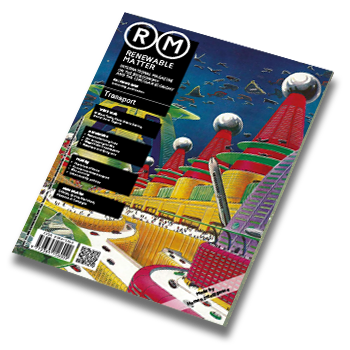The International Organization for Standardization (ISO), which is responsible worldwide for setting technical standards, has published, after a five-year effort, new international standards aimed at ensuring the transition to the circular economy. The three new ISO are Vocabulary, principles and guidance for implementation (ISO 59004), Guidance on the transition of business models and value networks (ISO 59010), and Measuring and assessing circularity performance (ISO 59020).
They offer a comprehensive toolkit for circular economy implementation, ranging from principles to measurement, and provide a global consensus across countries on a common definition of circular economy and its principles. For the first time, ISO standards provide a shared understanding of the vocabulary, implementation, business models, value networks, measurement, and evaluation of the entire sector.
The standards bring together more than 100 countries
Seventy-five national standardisation bodies from around the world, including many developing countries, actively participated in ISO/TC 323, the technical committee for the circular economy that developed these standards. The committee was led by Catherine Chevauché, Circular Economy Director at Veolia, who previously worked on achieving carbon neutrality for industrial activities within the Suez Group. During the presentation event, Chevauché recounted how a "hundred countries globally, from Africa to South Asia and South America, have participated in the working groups." In this process, which began in 2019, the standards bodies were simultaneously joined by some 15 liaison organizations, including the Ellen MacArthur Foundation, the United Nations Industrial Development Organisation, and the World Customs Organisation.
The standards were created to provide a common understanding of the circular economy to any type of company or organisation, whether private, public or even NGOs," pointed out Chevauchè, who introduced the standards together with ISO's sustainability manager Noelia Garcia Nebra. However, as Chevauchè and Garcia Nebra highlighted, the adoption of ISO standards is always voluntary. The hope, however, is that many countries will get on board and that the same process can be undertaken at the European level.
The first standard for the circular economy: ISO 59004
The first standard to be presented was ISO 59004, which provides an international definition of the circular economy and identifies six complementary and interconnected principles. Namely, systems thinking, value creation, value sharing, resource management, resource tracking, and ecosystem resilience. Within this first standard, the actions priorities to achieve better circularity performance are established: refuse, rethink, source, reduce, repair, reuse, refurbish, remanufacture, repurpose, cascade, recycle, recover energy, and re-mine.
In addition to establishing a definition and the principles of the circular economy, this standard provides guidance for its implementation and defines key terminology. By implementing ISO 59004, public and private companies can develop sustainable and ambitious solutions while improving stakeholder relations and complying with environmental regulations. By establishing this first standard, on which the other two standards are somewhat dependent, the International Organization for Standardization has laid the groundwork for contributing to climate change mitigation and adaptation and supporting sustainable resource management.
The second standard for the circular economy: ISO 59010
"Our current business models are based on competition. Now we must think about collaboration and industrial symbiosis." This was one of the key messages from the Head of ISO/TC 323 during the presentation that was live-streamed on YouTube and LinkedIn.
Analysing current business models and value networks through circular economy principles and actions to transition to circular business models is at the heart of the second standard presented, ISO 59010. This standard aims to help organisations define goals, determine a circular economy strategy, transform the business model, and value network towards circularity, and take charge of reviewing and monitoring current practices.
Transitioning from the traditional linear business model to a circular one: all companies committed to this direction can find guidance in ISO 59010, enabling them to contribute to sustainable business practices and a resilient global economy. Indeed, this second standard comes to the aid of all entities interested in improving resource efficiency and reducing waste, enhancing their adaptability to regulatory and market changes, and aligning their business practices with the global Goals of sustainability.
The third standard for circularity: ISO 59020
The ISO 59020 standard is crafted as a framework applicable across various levels of an economic system, ranging from regional, interorganizational, and organizational to the product level. ISO 59020 is structured to oversee targets and actions (of reduction, repair, reuse, recycling), measure resource flows (including inflows, outflows, and losses), assess sustainability impacts (social, environmental, and economic), while always considering key indicators of circularity, such as the utilization of resources like energy and water.
Using the framework outlined in ISO 59020 to measure and evaluate circularity performance aims to assist organizations in minimising resource use, enhancing transparency and accountability in environmental reporting, and facilitating strategic decision-making for sustainable resource management.
Other ISO related standards
Alongside these newly introduced standards are two ISO standards: ISO 59040 Product Circularity Data Sheet and ISO 59014 Sustainability and Traceability of Secondary Materials Recovery. These standards are valuable for the transition to a circular model but are currently in the development phase and at the draft international standard stage. Concurrently, the development of ISO standards for the circular economy is interconnected with other ISO standards, including those for sustainable sourcing and quality, and environmental management.
“The approval and publication of the ISO 59000 standards mark a significant step toward clearly defining the principles, terminology, and implementation framework for the circular economy, as well as establishing metrics for organisations around the world," Chiara Catgiu, Manager Climate Change & Sustainability Services & SME Circular economy at KPMG's Global Decarbonization Hub, told Renewable Matter. "This progress represents a key milestone anticipated by experts and companies worldwide, providing a clear path for companies wishing to adopt circular practices, as well as guidelines for transforming business models from linear to circular. We truly hope that these standards provide a concrete framework for measuring and evaluating circularity."
A lengthy but necessary process
As early as 2018, the French Standardization Association (AFNOR) published the first standard on circular project management on an experimental basis. Later, France proposed to the International Organization for Standardization to create a technical committee to draft international standards on the circular economy, which occurred in 2019. The technical committee in question, ISO/TC 323, has worked about five years to succeed in covering all individual aspects of the circular economy, including public procurement, production and distribution, end-of-life, as well as broader areas such as behavioural change in society, evaluation and, again, the creation of a circular footprint or circularity index.
Until now, while there has been an abundance of standards and initiatives that often look only at certain components of circularity, such as recycling, there was no agreed-upon global vision of how a company could truly close the loop and that every organisation could use. As Chevauché said, "It is essential to ensure that the standards are fair and relevant to all countries. To that end, we relied on a balanced geographic distribution of leadership of the different working groups by proceeding through consultations and intermediate votes. Of course, sometimes there have been complicated arbitrations, as in the case of the issue of incineration with energy recovery."
However, to respond to the ongoing environmental and social emergency and speed up the process, the groups have been working in parallel on the various standards in order to publish them quickly and simultaneously. A journey that ends today but only sets the stage for change that is largely all to be implemented.
This article is also available in Italian / Questo articolo è disponibile anche in italiano
Image: Envato



